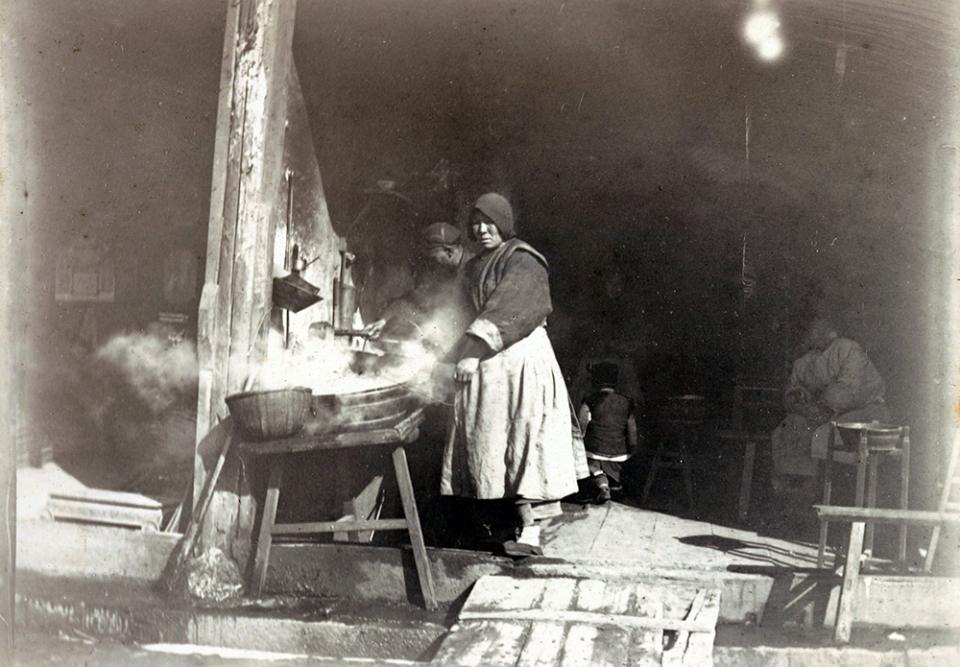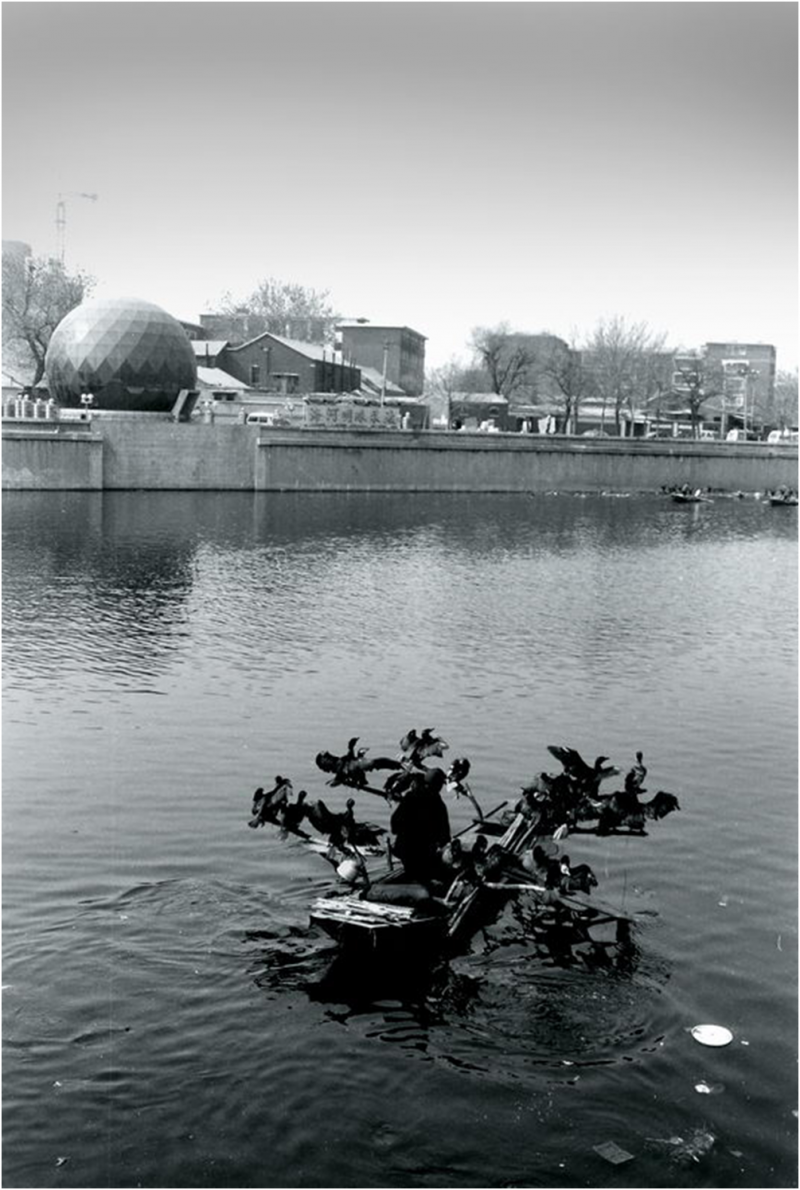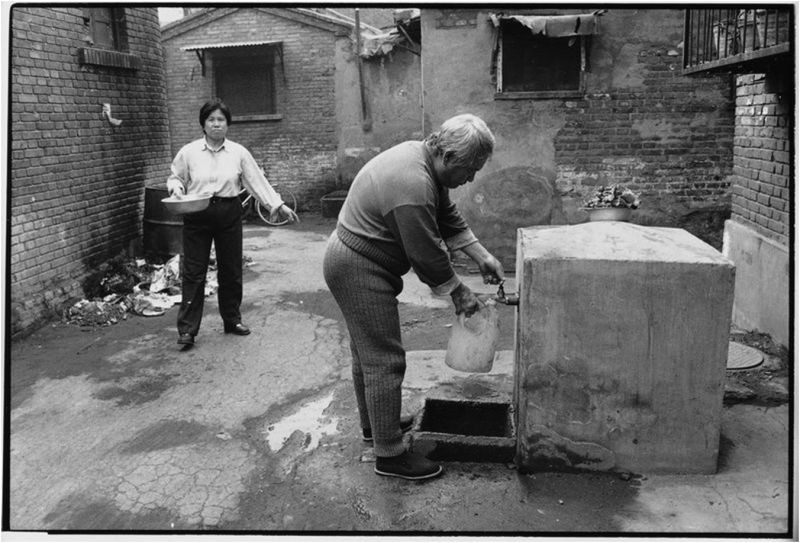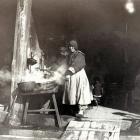The city of Tianjin was one of China’s treaty ports with foreign concessions in the second half of the nineteenth and the early twentieth centuries. Located on the China Sea and 75 miles from the inland capital of Beijing, Tianjin had around 200,000 residents in 1900, and all of them needed fresh water. The city solved this problem by turning to local water entrepreneurs, before eventually creating a public water supply system.
A British traveler and author who visited Tianjin in 1858, Laurence Oliphant, noted that the most common commodities sold on the street were water and firewood. Water selling had long been one of the most common businesses in Tianjin, and was also one of the oldest, dating back to 1404 when the city was officially founded. Tianjin suffered from a brackish water problem due to its high underground water level and seawater mixing with its rivers. Back in the eighteenth century, most of the city’s old wells that had offered potable water failed, such that the main supply had to come from a single stretch of the Southern Canal (南运河), which lay to the north, outside the city walls. For those who lived far from that source, the most convenient way to get fresh drinking water was to buy it daily from water shops.

A typical Chinese water carrier, 1900–1930.
A typical Chinese water carrier, 1900–1930.
Unknown photographer, c. 1900–1930.
Courtesy of Peter Lockhart Smith and Historical Photographs of China, University of Bristol. Banister Family collection, Ba04-35.
Accessed on 8 May 2019. Click here to view source.
 This work is licensed under a Creative Commons Attribution-NonCommercial-NoDerivs 3.0 Unported License.
This work is licensed under a Creative Commons Attribution-NonCommercial-NoDerivs 3.0 Unported License.
Shopkeepers hired water carriers to transport water from the bank of the Southern Canal to their shops. A folk poem, The Zhu Zhi Poem of Tianjin (津门竹枝词), depicted men carrying water in buckets suspended from shoulder poles or in wheelbarrows, racing along a road that was slippery from recent rain.
When Tianjin was opened as a treaty port in 1860, it was also forced to embark on a path of modernization, including introducing a modern system of water supply and sanitation. But for many decades the old water shops survived the trend toward modernization and entered a new stage of development at a time when most traditional businesses were disappearing. They endured as the principal source of potable water well into the twentieth century, until a system of pipelines was completed. Even then, water shops could—and did—apply to construct a branch pipeline leading to an individual shop. The shop’s faucet thus became like a water well located inside the water shop, offering a steady supply of fresh water. Despite infrastructure changes, the old water-selling mode persisted.

A Chinese hot-water shop, c. 1902.
A Chinese hot-water shop, c. 1902.
Photograph by Charles Ewart Darwent, c. 1902.
Courtesy of Jane Hayward and Historical Photographs of China, University of Bristol.
Accessed on 8 May 2019. Click here to view source.
 This work is licensed under a Creative Commons Attribution-NonCommercial-NoDerivs 3.0 Unported License.
This work is licensed under a Creative Commons Attribution-NonCommercial-NoDerivs 3.0 Unported License.
The typical water shop was sited on a back street and only had one or two workers. Two kinds of water were sold in the shop: raw water and boiled water. The boiled water was divided into three temperature types: boiling hot, warm, and cold (or cooled) water. There were usually three or four large woks filled with each type. A customer would specify how they wanted to use the water—for example, “water for face washing”—and then the seller would mix water from different woks to meet the customer’s need. Boiling water had to be hot enough to make tea or egg soup. When a customer brought a teapot to fill with hot water, the shop worker would raise high a shiny white iron dipper and let the water cascade into the teapot, saturating the tea leaves inside and filling the air with fragrance. While doing this, they were also showing the customer how good their hot water was.
The water shops and their methods of selling became a large part of local culture and tradition. Old Tianjiners were used to going out early each morning to buy a kettle of hot water. Rich families would pay the water shop to deliver hot water directly to their houses, conspicuously showing off their high status, but the common people had to fetch their own.
The water shop saved its customers the cost of fuelwood or coal for heating water. Urban dwellers would create a cooking fire in their houses three times a day to prepare their meals. When they needed warm water between meals, they would go to the water shop instead of lighting their own hearth fire an additional time.
In Shanghai, a similar system of water shops operated: they were known as Laohu Zao (老虎灶, tiger hearth). The name came from the formidable shape formed by the shop’s two-burner stove and chimney. The technology resembled Tianjin’s heating apparatus. For over one hundred years it existed in South China, right up to the Republic era, providing an efficient, energy-saving form of centralized water heating.
Even as new water pipelines began appearing in Tianjin, the number of water shops kept on increasing, not fading away. As late as 1948, the Tianjin city government counted 488 water shops, supplying a population of 1.9 million (today, the population of the city is approaching 19 million). Water shops continued to help solve the water supply problem and to improve sanitary conditions in the growing city.
By concentrating water heating in a few places the shops saved energy, as well as offering a more convenient water service. It was not until the 1970s and 1980s, when a completed network of pipes brought water to every household, that the shops disappeared.
Acknowledgments
This article was published on 27 June 2019 and is an outcome of the Tianjin Philosophy and Social Science Planning Project (天津市哲学社会科学规划项目), project number: TJZL16-001Q. The author would like to thank Mr. Wang Xiaoyan (王晓岩) for generously offering the precious photos he took before the demolition of the Tianjin old-city area to illustrate this article. Mu Cao is a researcher in the History and Culture Department at Tianjin Normal University.
How to cite
Cao Mu. “The Water Shops of Republican Tianjin.” Environment & Society Portal, Arcadia (Summer 2019), no. 20. Rachel Carson Center for Environment and Society. doi:10.5282/rcc/8734.
ISSN 2199-3408
Environment & Society Portal, Arcadia
 This work is licensed under a Creative Commons Attribution 4.0 International License.
This work is licensed under a Creative Commons Attribution 4.0 International License.
2019 Cao Mu
This refers only to the text and does not include any image rights.
Please click on the images to view their individual rights status.
- Cao Mu 曹牧. “Jindai Tianjin gongyehua gongshui yu shuifu shuipu de zhuanxing” 近代天津工业化供水与水夫水铺的转型 [The Water Supply Industrialization and Transformation of Water Carriers and Watershops of Early Modern Tianjin]. Lishi Jiaoxue 历史教学 9 (2015):48–53.
- Lin Xi 林希. Qishi ni budong Tianjinren 其实你不懂天津人 [Actually you don't know Tianjiners]. Tianjin: Tianjin Renmin Chubanshe 天津人民出版社 [Tianjin People's Press], 2014.
- Gu Daoxin 顾道馨. “Lvbo Ji—Gu Daoxin zhushu xuancui” 绿波集—顾道馨著述选粹 [Green waves anthology: The collected works of Gu Daoxin]. Tianjin: Tianjin Guji Chubanshe 天津古籍出版社 [Tianjin Ancient Books Press], 2013.
- Liu Haiyan 刘海岩. “20 shiji qianqi Tianjin shuigongji yu chengshi shenghuo de bianqian” 20世纪前期天津水供给与城市生活的变迁 [The transformation of city life and water supplies of Tianjin in the early twentieth century]. Jindaishi Yanjiu 近代史研究 [The modern history study] 1 (2008):52–67.
- Lan Xiang 蓝翔. “Shanghai bainian laohuzao xunzong” 上海百年老虎灶寻踪 [Seeking for Laohu Zao]. Nongye kaogu 农业考古 [Agricultural Archaeology] 4 (1995): 104–108 / 42–45.
- “Zuihoude ‘Laohu Zao’” 最后的"老虎灶 [The last “Laohu Zao”]. Dangan Chunqiu 档案春秋 [Memories and archives] 4 (2018): 3.












